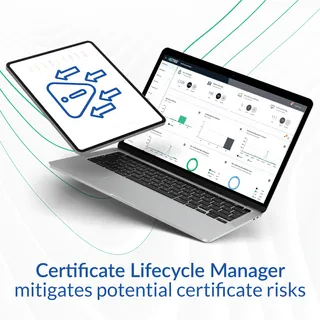Top 8 weaknesses in Multi-Factor Authentication (MFA)


Multi-factor Authentication (MFA) is a security principle that requires multiple authentication factors before granting users access to a system. For example, a user may have to submit a username, a password, and a security code texted to their phone before they can connect to a web application.
MFA makes it significantly harder for cybercriminals to access a company's digital assets. To successfully break into a system, aside from the username-password combination, an attacker would need access to certain devices, knowledge of security answers, biometric data, or more.
However, there are some inherent weaknesses in MFA that deserve attention. By identifying these weaknesses, you can adjust your MFA setup to ensure the security of your access control systems. In this article, we’ll dig into the weaknesses of MFA, how you can use credential- or certificate-based authentication to combat them, and the role of Certificate Lifecycle Management (CLM) in reducing risk.
The top 8 weaknesses of MFA
These eight MFA weaknesses can make your system easier for attackers to exploit:
- Lack of user education. Users may use the same passwords for their email and application logins, not understanding the risk this can pose in an MFA system that sends a code to their email.
- Social engineering attacks. In this type of attack, a bad actor may trick an employee into revealing their passwords for multiple accounts or devices, as well as the answers to security questions.
- Phishing attacks. Phishing attacks can result in users entering their login credentials into illegitimate online forms. This enables attackers to hack into their email accounts and retrieve codes sent by an MFA system.
- Man-in-the-middle (MITM) attacks. MITM attacks can intercept user credentials as they're entered into a hacker’s fake network.
- Malware and keyloggers. Malware, especially keyloggers, can record users’ keystrokes and send them to a hacker.
- Single point of failure. If the primary MFA device or method fails—e.g., smartphone app or hardware token—users get locked out of their accounts. Also, human error, such as users falling for a phishing or social engineering attack, is a point of failure MFA cannot entirely mitigate.
- Complexity and usability. MFA systems require effort to retrieve, remember, and enter information. As a result, users may choose to use simple, easy-to-crack passwords.
- Lack of regular updates. MFA system providers continuously work to improve the security of their products—for example, by strengthening authentication protocols and enhancing encryption algorithms. Not updating the MFA system means missing out on necessary security improvements.
The advantages of certificate-based authentication over credential-based authentication
Certificate-based authentication, which uses secure digital certificates instead of depending solely on users entering information, offers some advantages over credential-based authentication systems, such as MFA.
With a certificate-based authentication system, you limit user involvement in the authentication process. For instance, when a device uses a digital certificate to access a system, the user may not have to enter anything because the encrypted digital certificate serves as the access credential.

How CLM mitigates potential certificate risks
Despite the huge benefits they bring, it's worth noting that digital certificates can pose risks, such as:
- Expiry. Certificates can expire without the user knowing. As a result, users may not be able to access key services.
- Mismanagement. An admin can forget to discontinue a device certificate for an employee who has left the company.
- Revocation issues. When certificates get compromised, they need to be revoked immediately. If not, an attacker can use them to get inside sensitive systems.
With a Certificate Lifecycle Management system, you can avoid these issues. For instance, Sectigo Certificate Manager (SCM) is a trusted certificate authority that enables admins to keep track of all certificate expirations, preventing surprise expiries. SCM also ensures that admins revoke compromised certificates and certificates for employees who are no longer with the company.
Avoid MFA weaknesses with Sectigo Certificate Manager
Factors that can make MFA weak can compromise the security of your access control system, underscoring the benefits of certificate-based authentication. Sectigo Certificate Manager eliminates manual certificate expiration tracking and vulnerability management, as it automatically oversees certificates throughout their entire lifecycles. Contact Sectigo today to learn more.
